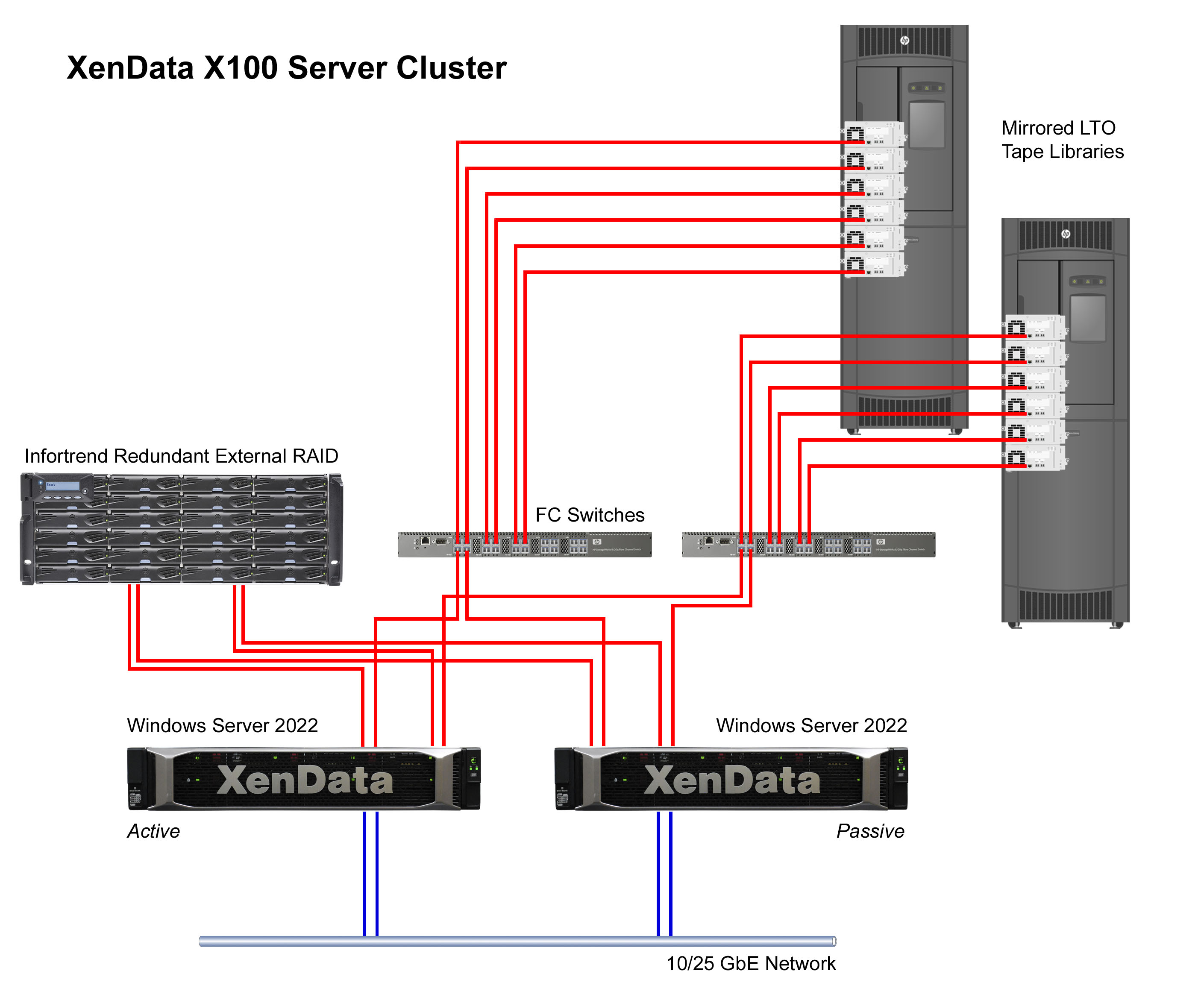XenData Unveils X100 Active Archive
The management solution is an active archive for managing one or more LTO or ODA libraries

WALNUT CREEK, Calif.—XenData today announced availability of its X100 active archive for management of one or more enterprise-class LTO or Optical Disc Archive (ODA) libraries that can be scaled to hundreds of petabytes in a configuration based on a Windows Server 2022 cluster with no single point of failure.
The X100 supports robotic libraries from HPE, IBM, Oracle, Qualstar, Quantum, Sony and Spectra Logic. It is well-suited for creative video, medical imaging, video surveillance and other applications with high volumes of large files, the company said.
XenData Archive Series software powers the X100. The latest version of the XenData software is optimized for high-performance servers with multiple Xeon processors, it said.
The archive system includes a fully redundant RAID from Infortrend. The RAID is used as a cache for all files written to the archive and is available with a capacity up to 280TB.
The solution writes LTO cartridges using LTFS and writes to ODA cartridges using the Sony interchange standard. It fully supports the Microsoft security model based on Active Directory, making it easy to install in an existing Windows domain, the company said.
Functions include automatic LTO cartridge replication, file version control, automatic migration of files to the latest generation of LTO or ODA and management of an unlimited number of external cartridges, it said.
When used with two LTO libraries, the system may be configured to mirror archived content across the libraries. This provides strong data protection which goes well beyond a simple backup file repository as file restores are load balanced between the two libraries, it said.
The X100 is available with three interfaces that can be used at the same time, including the file-folder interface, object storage interface and XML API.
Multiple X100 systems can be synchronized using XenData’s Multi-Site Sync service, which links multiple archives in different locations, creating a single global file system accessible from anywhere. As soon as a file is archived to LTO or ODA at one location, it becomes available as a stub file within the global file system.
When a user makes a change by writing, overwriting or deleting a file, that change is propagated to all locations. This provides a consistent up-to-date set of files across the entire distributed organization, it said.
More information is available on the company’s website.
The professional video industry's #1 source for news, trends and product and tech information. Sign up below.
Phil Kurz is a contributing editor to TV Tech. He has written about TV and video technology for more than 30 years and served as editor of three leading industry magazines. He earned a Bachelor of Journalism and a Master’s Degree in Journalism from the University of Missouri-Columbia School of Journalism.

